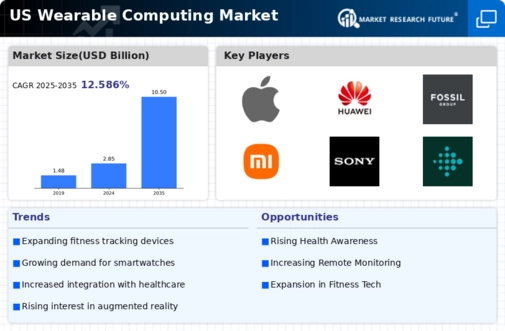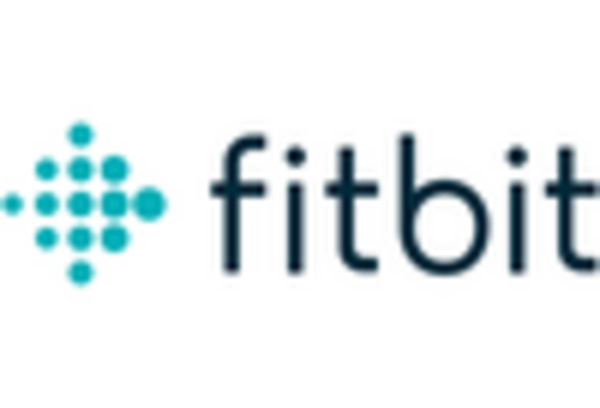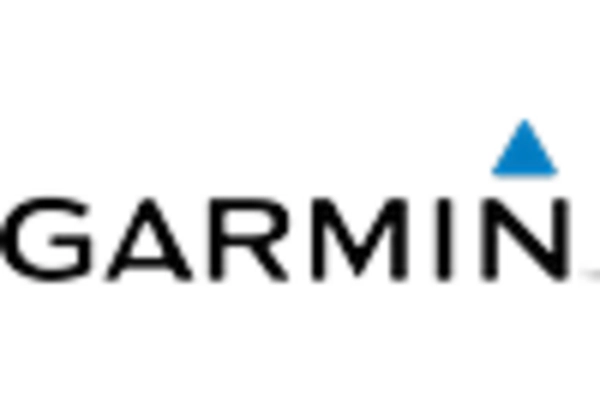Rising Health Awareness
The increasing awareness of health and wellness among consumers is a pivotal driver for the wearable computing market. As individuals become more conscious of their health metrics, the demand for devices that monitor vital signs, physical activity, and overall fitness is surging. In the US, the wearable computing market was projected to reach approximately $30 billion by 2026, reflecting a compound annual growth rate (CAGR) of around 15%. This trend is further fueled by the integration of advanced sensors and analytics in wearable devices, enabling users to track their health in real-time. Consequently, manufacturers are focusing on developing innovative products that cater to this growing consumer base, thereby enhancing their market presence in the wearable computing market.
Technological Advancements
Technological advancements play a crucial role in propelling the wearable computing market forward. Innovations in miniaturization, battery life, and connectivity are enabling the development of more sophisticated devices. For instance, the introduction of 5G technology is expected to enhance the functionality of wearables, allowing for faster data transmission and improved user experiences. In the US, the market is witnessing a shift towards smartwatches and fitness trackers that incorporate artificial intelligence and machine learning capabilities. These advancements not only improve the accuracy of health monitoring but also expand the range of applications for wearable devices. As a result, the wearable computing market was likely to experience robust growth, driven by continuous technological evolution.
Integration with Mobile Devices
The seamless integration of wearable devices with mobile technology is a significant driver for the wearable computing market. As smartphones become ubiquitous, consumers are increasingly seeking wearables that can synchronize with their mobile devices for enhanced functionality. This integration allows users to receive notifications, track fitness data, and manage health metrics directly from their smartphones. In the US, it is estimated that over 70% of wearable device users also own a smartphone, highlighting the interdependence between these technologies. This trend encourages manufacturers to develop wearables that offer compatibility with various mobile platforms, thereby expanding their reach and appeal in the wearable computing market.
Increased Adoption in Fitness and Sports
The growing adoption of wearable technology in fitness and sports is significantly influencing the wearable computing market. Athletes and fitness enthusiasts are increasingly utilizing wearables to enhance their performance and track their progress. In the US, the fitness segment of the wearable computing market is expected to account for over 40% of total sales by 2025. This trend is supported by the rising popularity of fitness apps and platforms that integrate with wearable devices, providing users with personalized training regimens and health insights. Consequently, manufacturers are focusing on creating specialized products tailored to the needs of athletes, thereby driving innovation and competition within the wearable computing market.
Growing Demand for Remote Patient Monitoring
The rising demand for remote patient monitoring solutions is emerging as a key driver for the wearable computing market. With an increasing number of healthcare providers adopting telehealth services, wearables that facilitate remote monitoring of patients' health conditions are gaining traction. In the US, the market for remote patient monitoring devices is projected to grow at a CAGR of 25% over the next five years. This growth is attributed to the need for continuous health monitoring, especially for chronic conditions, which can be effectively managed through wearable technology. As healthcare systems increasingly recognize the value of wearables in improving patient outcomes, the wearable computing market was likely to expand significantly.
















Leave a Comment